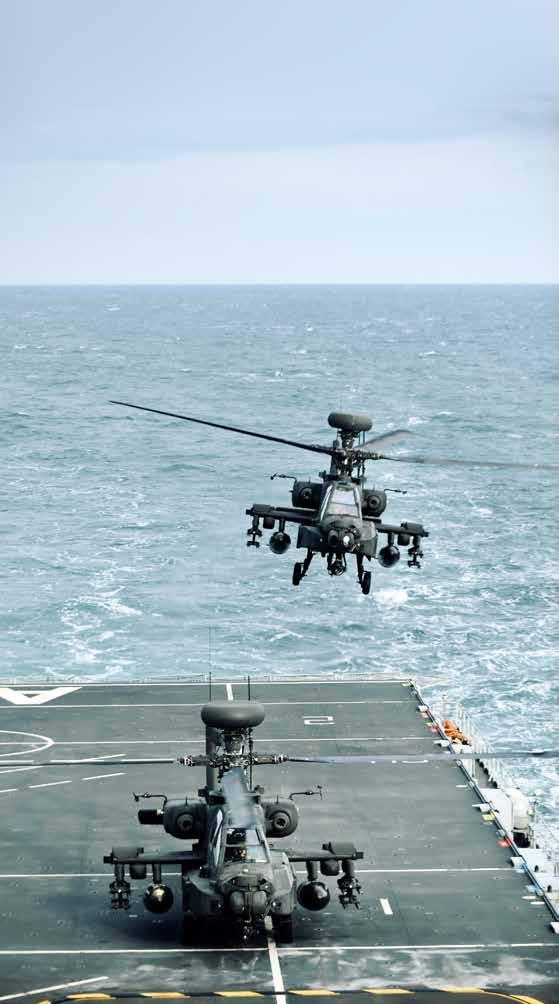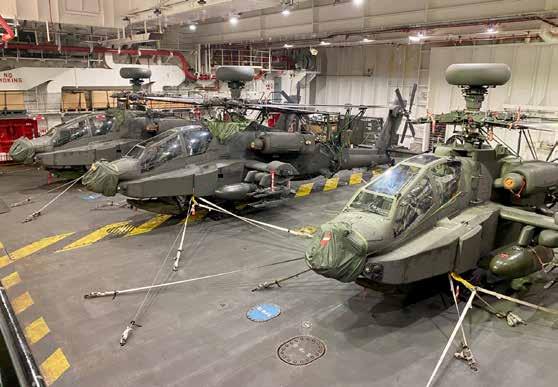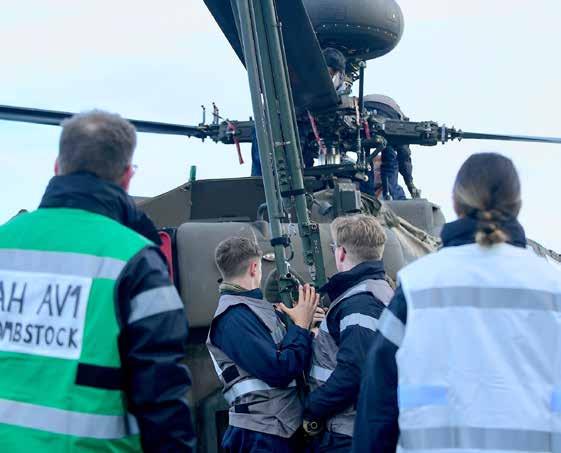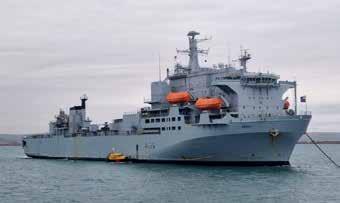
2 minute read
Ex CHINTHE DRIFT
656 Sqn flew maritime operations into Libya on Operation ELLAMY in 2011 and today are 1 Avn BCTs only maritime attack specialists.
Ex CHINTHE DRIFT, in March 2023, will likely be the last planned embarkation of Mk1 Apache on an RFA/RN vessel. The aim was to generate and refresh maritime capability that would see 656 Sqn Group maintain a credible maritime attack force until the Apache Mk1 is retired in spring 2024. The exercise also included Army Avn Standards and the 4 Regiment AAC Qualified Helicopter Instructor to ensure a capability is taken forward to the new AH64E.
RFA Argus is primarily the UK’s casualty receiving ship and the small flight deck above is seemingly an afterthought to the hugely impressive hospital facility contained in the bowels of the ship (one of the only ships in the world with an MRI scanner). Unlike the vast supercarriers of HMS Prince of Wales and HMS Queen Elizabeth, Argus can only fit 3 helicopters on deck and every time one is moved from the (snug) hangar to the flight deck it must have its blades folded. Aircraft moves once on deck were akin to helicopter chess as aircraft moves had to planned methodically to stop an usable aircraft being stuck on an unusable spot.
Coupled with the requirements post every flight to wash the engines of corrosive salt water, the REME and Ground Support Flight (GSF) had their work cut out but performed excellently, despite the challenging and cramped living and working conditions. It was not uncommon for cold waves to be spraying onto the groundcrew, in the dark, as they prepared the aircraft for departure and tied it down post flight. The success of the flying was testament to the professionalism the GSF and REME in challenging environmental conditions.
The first objective was to gain Deck Landing Qualifications (DLQ) for new aircrew and refresh qualifications for aircrew with previous deck experience. Unlike the football pitch size deck of the supercarriers, Argus doesn’t have much room to move. Many junior pilots, and even some of the more senior pilots, found themselves working hard to stay on the lines… and that was in the daytime!
The challenge was multiplied at night, with no moon (Apache cannot use night vision system from ships so back to reversionary flying), rain, low cloud and choppy sea states. Despite the typical February storms that delayed some days flying, 656 Sqn Group managed to DLQ all aircrew. Once this was complete the focus switched to Role Qualification (RQ) training.
This involved flying tactical pairs strike missions away from ‘mother’ onto coastal targets; a much more natural environment for the aircrew than hovering alongside a deck 60ft over the sea! By the end of the exercise, all the training objectives were complete. This was no easy task and is the first maritime exercise in recent memory where a complete reset of DLQ and RQ was achieved for a Sqn Group. As a bonus, it was decided that all aircrew were Eligible for the Royal Navy Embarked Aviation Qualification – further adding to the credibility of the Sqn for future deployments. Exercise CHINTHE DRIFT should ensure a baseline of understanding is taken to the


AH64E maritime operations and, crucially, AH Mk1 remains a credible maritime strike asset for 1 AVN BCT.
Capt Roberts 656 Sqn 4AAC










